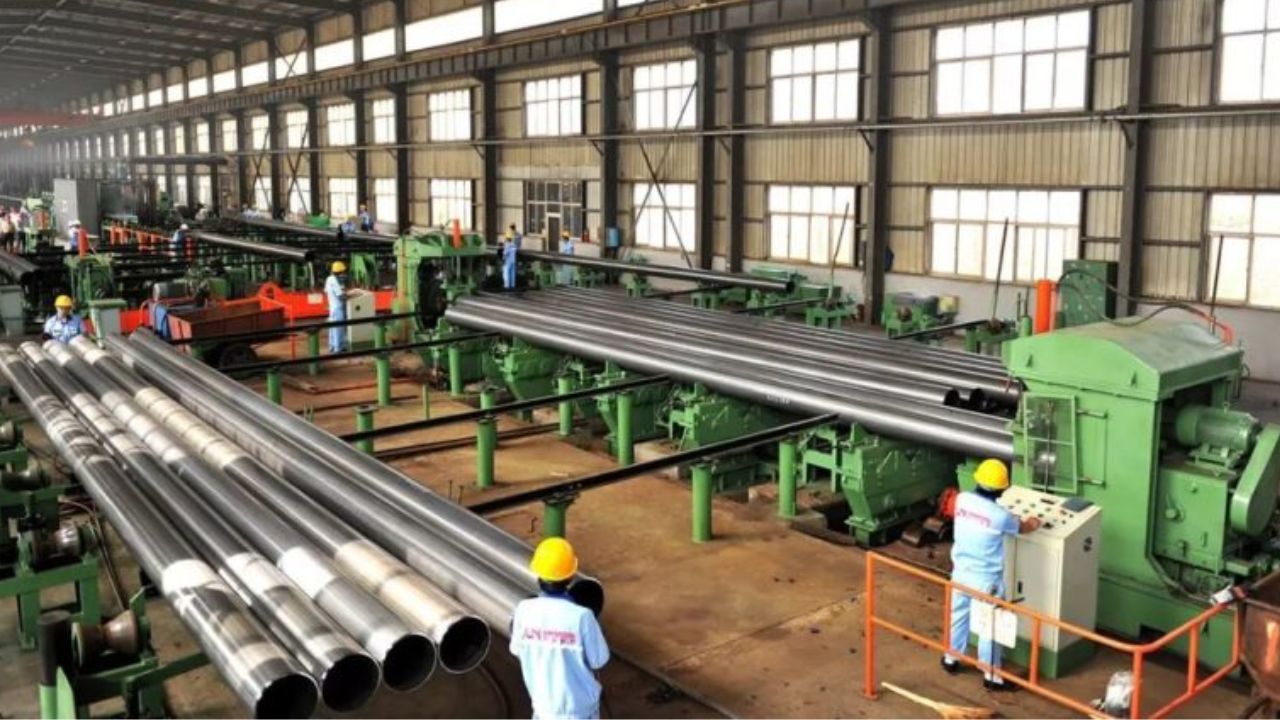Pipe performance depends mainly on thickness when implemented in pipe applications. Pipes are widely used across manufacturing sectors to transport substances such as gas, oil, and other materials. The selection of a suitable pipe wall thickness controls both long-term operation safety and durability. The high-quality pipe manufacturer Tuspipe realizes the fundamental significance of establishing proper thickness for its products. The following discussion describes the relationship between the Pipe Thickness Dimensions Chart and Formula and operational performance, as well as the methods Tuspipe provides for business customers to choose optimal pipes.
Why Is Pipe Thickness Important?
The strength and durability of a pipe heavily depend on its thickness measurements. The choice of thick pipes brings better resistance to pressure ruptures and prevents leaks within the system. The industrial application of these pipes proves advantageous for operations that transport heavy substances such as oil and gas. Lighter jobs require thinner pipes, yet they deliver shorter service life and weaker resistance to pressure. When pipes do not match the requirements of their use, they tend to fail prematurely. The pipe material will split or explode if faced with excessive pressure, which leads to dangerous leaks. The suitable choice of pipe thickness prevents common operational issues, making sure the pipe functions appropriately.
How Does Tuspipe Help Customers Choose the Right Thickness?
Tuspipe chooses proper pipe thicknesses for customers using its knowledge base built through years of working with multiple industries. The company creates its products with different thickness levels to accommodate various application needs. Tuspipe understands that every installation demands specific attention to pipe thickness because they provide services for carrying oil, as well as gas and water. Tuspipe aligns its operations with customer assistance to grasp their specific demands. Different job requirements determine whether thick or thin pipes should be used, depending on the level of operational pressure or weight constraints. The company applies its understanding to ensure all customers receive suitable pipes for their specific tasks. This approach enhances overall system safety and reliability.
Factors to Consider When Choosing Pipe Thickness
Several factors influence the decision about pipe thickness. These factors enable engineers to decide what thickness the pipe should be so it fulfills all safety needs and operating requirements.
Pressure
The internal pressure of the pipe determines the required thickness of the material. Above-high-pressure gas transportation requires pipes to become thicker because failure prevention becomes essential.
Material
Different materials have different strengths. Steel pipes demonstrate higher strength than plastic conduits, which allows steel pipes to possess reduced thickness for similar applications compared to plastic pipes.
Temperature
Heat in extremely hot locations weakens pipes, so engineers need to install thicker materials to ensure they remain strong enough for safety purposes.
Size and Length of Pipe
The thickness requirement of long pipes or large diameter pipes increases because of their extended distance requirements. The nominal strength of the pipe should maintain its original value throughout an extended range of distances.
External Conditions
The nearby environment of the pipe, including soil characteristics and weather patterns, influences how much material should be used for the pipe wall. The need for additional protection through thick pipes becomes necessary when soil depths exceed boundaries and seismic activity is intense in the area.
The Benefits of Choosing the Right Pipe Thickness
Selecting the correct pipe wall measurement will produce important financial and operational advantages for future pipeline operations. Various advantages come from the appropriate choice of pipe thickness.
Safety
Selecting the proper pipe wall thickness allows operators to avoid leaks and prevent accidents. A pipe with inadequate thickness for its pressure requirements may burst, which leads to environmental destruction and endangers nearby individuals. The failure risk under pressure decreases when pipes have increased thickness.
Durability
Pipes with appropriate thickness demonstrate extended durability. Fewer maintenance costs and replacement expenses result from using pipes of the correct thickness.
Cost-Effective
The production cost of thicker pipes might be higher than thinner alternatives, yet they deliver long-term financial benefits when they need fewer maintenance jobs and replacement efforts. An appropriately selected pipe helps avoid the expenses of maintenance breaks and pipe replacement requirements.
Performance
Pipes that are the correct thickness for their job will work better. They will handle the pressure and conditions they face without breaking down, leading to smoother operations and fewer issues.
Conclusion
Any project that includes pipelines must make an accurate decision regarding pipe thickness. The entire system becomes less safe while also becoming more expensive to maintain and diminishing in durability because of the wrong pipe thickness selection. Tuspipe enables customers to select appropriate pipe solutions through their multi-thickness product assortment and comprehensive understanding of performance-impacting elements. The pipeline expertise at Tuspipe guarantees that each pipe meets performance standards no matter which factors, like pressure, material, temperature, or condition, apply. Choosing the correct pipe thickness enables customer installations to become safer with extended operational lifespan while providing improved efficiency.


